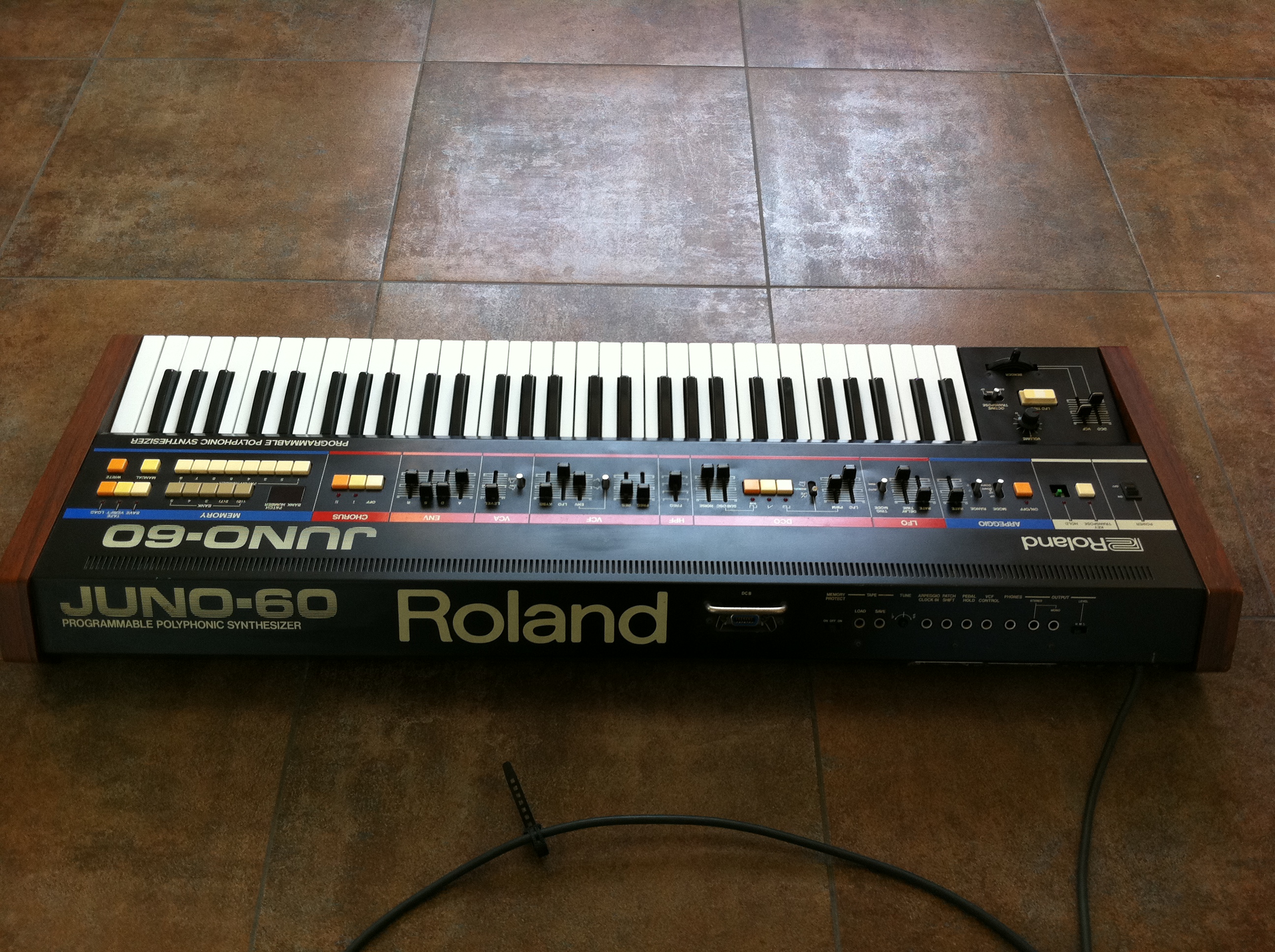

because limited but ideal as a first polyphonic synth because not too expensive (compared to a Jupiter 8 for example) the manual is useless. No MIDI, too bad, but it is made to play live! touch is Excellent So, it reminded me why I liked all the oldschool analog, time or emulation of any flower hair all sides, and when everyone asks you if you finally put to the VST, so practical and cheap. It's a real joy to put his hands on something that has personality, and here is not so common here. I do not use it for a long time, but here was immediately hooked, this machine is so endearing. īuying a Juno for what it is and that is precisely why we bought it! It is on is not with him that you will succeed in imitating a piano or oboe, but here there are other things. It really is the typical synth and ideal if you seek.

Īmbient groundwater, organ sounds and synthetic string, bass and techno-electro leads of all kinds, very classical, because the machine was much used by almost everyone in the 80's, but there is always something original is a little digging. The memories are 56 in number, and stores a sound 2 seconds. We can ne-plus-simple, just to get started and after 5 minutes, tripe on a wave or a captivating online disco-new wave with the arpeggiator! On the other hand, only 6 voice polyphony and a single tilt, but the fact still here, with 4 waveforms and 2 chorus FAT integrated to the beast. )+ sub-tilt + génialissime the arpeggiator! If not, the real analogue polyphonic classical, DCO-VCF-VCA-LFO-ADSR (more or less in the order. Physically, the beast is beautiful, a beautiful object in black metal, with wooden sides, typically vintage-style!Īnd above all, lots of buttons, everything is controlled in real time! Wireless keyboard aftertouch or velocity, 61 notes (ie 5 octaves)

the fact that a 31-year history because she was a little forgotten and he still has a legitimacy going into compositions through the front door. This is the Japanese building, that is to say very solid base and well studied. You should also know that it is not super complicated to maintain, change the battery (welded) remains the most common operation, clean the keyboard and pin short not rocket science. It was a very key in his age of 80 years, Roland Vintage sounds good, it is not in the Oberheim have more, but this keyboard is the essence of what is asked.Ĭurrently it is a bit over priced, it's true that 1000 euros? this is a keyboard that I picked up, having had an excellent opportunity to reacquire. I knew this instrument in ham piano paris in the 80s, I remember the brilliant sound he had and what we could do in a studio. I can not find that bad, but devoid of any setting. The chorus of the Juno is the only integrated because it is stereo and has two independent modes or addable. His big gap is the lack of a second and a second LFO EG.
ROLAND JUNO 60 PATCH
The matrix patch (internal) allows certain functions to refer to the EG or LFO it gives a little creativity, without any time to be transcendent.īehind a good reverb or CSF, its takes a great extent in this area of its juno is very good, I insist that the JUNO done to the JUNO, not experimentation and Sound research. This is exactly the same filters as the Jupiter-8, and the DCO provide harmonic enough to make tablecloths and interesting pads, brass, etc. The sound of the JUNO-60 is not in large diversitées, but against what it does it does well, it's not a Buchla either. The doc was not used much everything is intuitive, is absolutely nothing complicated about a Juno-60. This is nothing special appeal, anyone is able to get a playable sound in less than 5 minutes. The rear connector is not made for the wrong time, adjustable to 3 levels of output, one entry VCF Control Arpegio Clock, various pedals, etc.

It remains in effect for 150 euros midifiable among competitors Kenton, Are not they in life! Now for 1982 it is "good" and very good it was associated to a JSQ- is completely obsolete. The is a bit like the standard does not exist and Roland tried his luck with the DCB. Those who have known the analog V / Hz and V / Otc will remember shit when faillait Moog connect with Yamaha. Synth design in 1982, which explains a lot of gaps between the other MIDI or Roland wanted to impose its standard. nostalgia of the first ZX81!! a simple arpeggiator + Hold a button and transposes. ĥ7 patch memories saved, possible external backup tape has K7. Effect 2 relatively efficient modes of chorus, and chainable Chorus Chorus I + II (not feasible on the Juno-106). 5 octaves, polyphony 6 lanes, no aftertouch, no speed, no midi.


 0 kommentar(er)
0 kommentar(er)
